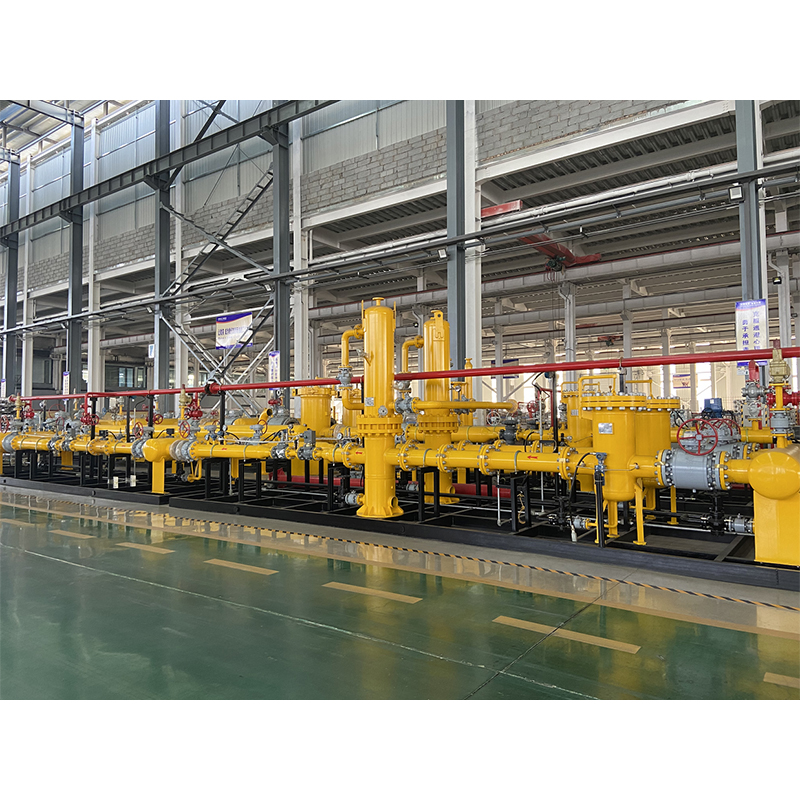
Nov . 12, 2024 04:27
Back to list
natural gas pressure reducing valve
Understanding Natural Gas Pressure Reducing Valves
In the realm of natural gas distribution, the safe and efficient management of gas pressure is fundamental. A crucial component in this system is the natural gas pressure reducing valve (PRV), which plays a significant role in ensuring that the gas delivered to consumers is at a safe and usable pressure. This article will explore the function, importance, types, and maintenance considerations for natural gas pressure reducing valves.
Function of Pressure Reducing Valves
A natural gas pressure reducing valve is designed to automatically regulate and reduce the pressure of gas flowing from a higher-pressure source to a lower-pressure system. Natural gas is typically transmitted at high pressure over long distances via pipelines. However, when it reaches distribution areas and is delivered to residential and commercial users, the pressure must be reduced to levels that are safe for use. This is where PRVs come into play.
The basic function of a PRV is to maintain a constant downstream pressure, regardless of fluctuations in the upstream pressure caused by varying demand or supply conditions. This regulation is vital because too much pressure can lead to equipment damage or catastrophic failures, while too little pressure can result in insufficient gas flow for appliances and heating systems.
Importance of Pressure Reducing Valves
The significance of pressure reducing valves transcends mere functionality; they are integral to safety and compliance in gas distribution systems. By maintaining appropriate pressure levels, PRVs help prevent leaks, explosions, and other hazards associated with gas systems. Furthermore, local regulations and safety standards often mandate the installation of PRVs in gas distribution networks to protect both infrastructure and consumers.
Moreover, by optimizing pressure levels, PRVs can contribute to the efficiency of gas appliances, ensuring that they operate within their designed parameters, thus preventing waste. This not only benefits consumers but also promotes energy conservation and sustainability in natural gas usage.
Types of Pressure Reducing Valves
Natural gas pressure reducing valves come in various types, each suited for different applications. The most common types include
natural gas pressure reducing valve

1. Spring-Loaded PRVs These valves use a spring mechanism to maintain the set outlet pressure. As the downstream pressure changes, the spring adjusts the valve’s position to modulate the flow of gas accordingly. This type of valve is widely used due to its reliability and simplicity.
2. Diaphragm PRVs These valves use a diaphragm that moves in response to pressure changes. They are often used in applications where precise pressure control is essential. Diaphragm PRVs can handle a wider range of pressures compared to spring-loaded ones.
3. Pilot-Operated PRVs These devices utilize a pilot valve to control a larger main valve. Pilot-operated PRVs are known for their ability to maintain very stable pressure under varying flow conditions, making them ideal for large-scale industrial applications.
4. Electronic PRVs With advancements in technology, electronic PRVs have emerged. These valves use sensors and electronic controls to adjust pressure levels more accurately and respond to real-time changes in demand. They are particularly beneficial in smart gas distribution systems.
Maintenance Considerations
To ensure the longevity and reliability of natural gas pressure reducing valves, regular maintenance is crucial. Operators should implement a routine inspection schedule to check for wear, leaks, and proper operation of the valve. Key maintenance practices include
- Visual Inspections Look for any signs of leaks, corrosion, or physical damage. - Testing Functionality Periodically test the valve to ensure it maintains the correct outlet pressure. - Cleaning Contaminants can hinder the valve's performance. Regular cleaning of the valve internals may be necessary, especially in dirty gas applications. - Calibration Ensure that the valve is calibrated correctly to maintain the desired pressure levels. This may involve adjusting the spring tension or electronic settings.
Conclusion
Natural gas pressure reducing valves are a vital component of natural gas distribution systems. They not only ensure the safe and efficient delivery of gas to consumers but also help protect infrastructure and enhance appliance performance. By understanding their function, recognizing their importance, and implementing regular maintenance practices, operators can ensure these valves perform optimally, promoting both safety and efficiency in natural gas usage. As technology evolves, the future of pressure reducing valves will likely bring even more innovations, furthering their significance in gas management.
Next:
Latest news
-
Safety Valve Spring-Loaded Design Overpressure ProtectionNewsJul.25,2025
-
Precision Voltage Regulator AC5 Accuracy Grade PerformanceNewsJul.25,2025
-
Natural Gas Pressure Regulating Skid Industrial Pipeline ApplicationsNewsJul.25,2025
-
Natural Gas Filter Stainless Steel Mesh Element DesignNewsJul.25,2025
-
Gas Pressure Regulator Valve Direct-Acting Spring-Loaded DesignNewsJul.25,2025
-
Decompression Equipment Multi-Stage Heat Exchange System DesignNewsJul.25,2025

